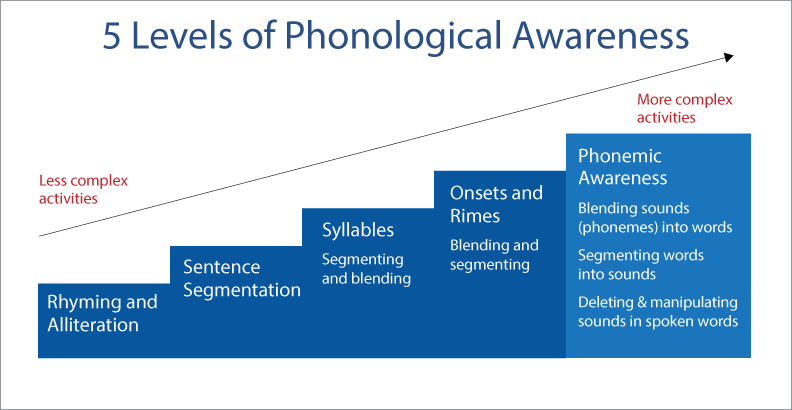Phonological awareness is a critical early literacy skill that helps kids recognize and work with the sounds of spoken language.
Phonological awareness is made up of a group of skills. Examples include being able to identify words that rhyme, counting the number of syllables in a name, recognizing alliteration, segmenting a sentence into words, and identifying the syllables in a word. The most sophisticated — and last to develop — is called phonemic awareness.
Phonemic awareness is the ability to notice, think about, and work with the individual sounds (phonemes) in spoken words.
Manipulating the sounds in words includes blending, stretching, or otherwise changing words. Children can demonstrate phonemic awareness in several ways, including:
recognizing which words in a set of words begin with the same sound
(“Bell, bike, and boy all have /b/ at the beginning.”)
isolating and saying the first or last sound in a word
(“The beginning sound of dog is /d/.” “The ending sound of sit is /t/.”)
combining, or blending the separate sounds in a word to say the word
(“/m/, /a/, /p/ – map.”)
breaking, or segmenting a word into its separate sounds
(“up – /u/, /p/.”)
This diagram explains the relationship between phonological awareness and phonemic awareness:

More on phonological and phonemic awareness
Launching Young Readers
Roots of Reading
Launching Young Readers
Sounds and Symbols
Looking at Reading Interventions
Blending Sounds in Syllables with Autumn, Kindergartner
Looking at Reading Interventions
Mastering Short Vowels and Reading Whole Words with Calista, First Grader
Reading 101 Learning Modules
Phonological and Phonemic Awareness: Introduction
Reading 101: A Guide for Parents
Reading 101 for Parents: Phonological and Phonemic Awareness
Reading and Writing SOS
Reading and Writing SOS: Phonemic Awareness, Phonics, and Fluency
Why Some Kids Struggle
Target the Problem: Phonological and Phonemic Awareness
Featured video
Browse our phonological and phonemic awareness resource library
Learn more about building children’s phonological and phonemic awareness skills through our articles, tips for parents, video, FAQs, and research briefs. Visit our Phonological and Phonemic Awareness section









